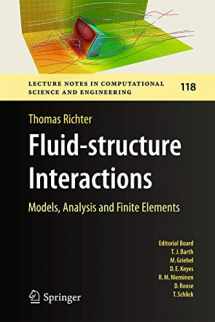
Fluid-structure Interactions: Models, Analysis and Finite Elements (Lecture Notes in Computational Science and Engineering, 118)
Book details
Summary
Description
This book starts by introducing the fundamental concepts of mathematical continuum mechanics for fluids and solids and their coupling. Special attention is given to the derivation of variational formulations for the subproblems describing fluid- and solid-mechanics as well as the coupled fluid-structure interaction problem. Two monolithic formulations for fluid-structure interactions are described in detail: the well-established ALE formulation and the modern Fully Eulerian formulation, which can effectively deal with problems featuring large deformation and contact. Further, the book provides details on state-of-the-art discretization schemes for fluid- and solid-mechanics and considers the special needs of coupled problems with interface-tracking and interface-capturing techniques. Lastly, advanced topics like goal-oriented error estimation, multigrid solution and gradient-based optimization schemes are discussed in the context of fluid-structure interaction problems.


We would LOVE it if you could help us and other readers by reviewing the book
Book review



